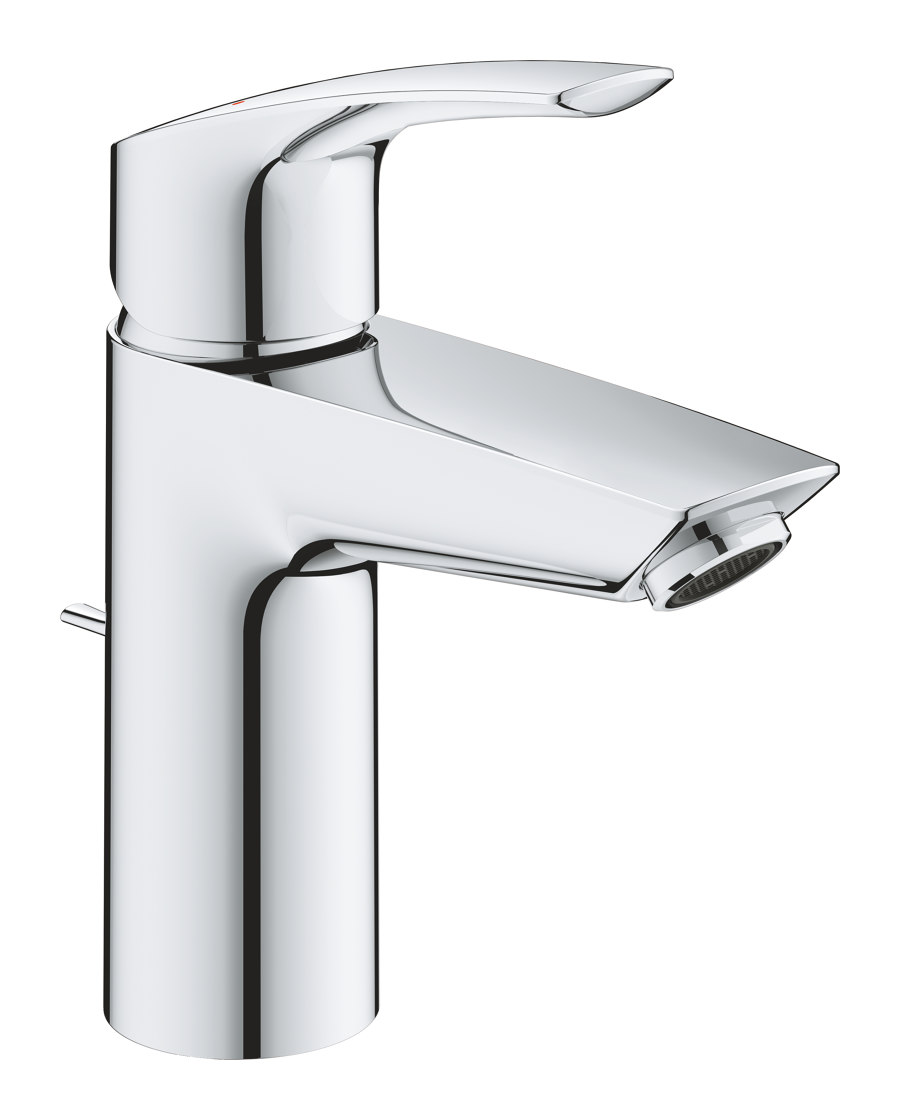Circular economy: GROHE
Brand story by Mareile Morawietz
Düsseldorf, Allemagne
31.08.21
With the building industry responsible for 50 per cent of material consumption worldwide, GROHE sees huge potential for innovation here and is putting the Cradle to Cradle® design concept at the heart of its product development.
Cradle to Cradle is the name of the design concept in which the recycling of a product´s components at the end of its life cycle is already planned for. GROHE is a sanitary-industry pioneer and is launching its first Cradle to Cradle Certified® products

Cradle to Cradle is the name of the design concept in which the recycling of a product´s components at the end of its life cycle is already planned for. GROHE is a sanitary-industry pioneer and is launching its first Cradle to Cradle Certified® products
×Even in ancient times, recycling was still a circular thing. The ancient Greeks, Romans and Egyptians collected glass and metals in order to create something new from them. Naturally, the system was not yet as organised and comprehensive as it is today, but the recyclables, on the other hand, were also unadulterated and thus easier to recycle.
With increasing industrialisation, the cycle came to a standstill and was replaced by a linear production concept of take-make-waste, which is today still too often the appropriate motto. This means that many companies use resources to produce a product that is disposed of when its useful life is over – a finite process which of course has devastating consequences.
To make things round again for the environment, GROHE is taking the next big step away from a linear model towards circular value creation. Together with strong partners, the global brand is bringing the revolutionary Cradle to Cradle® design concept into focus, with the aim of manufacturing products in the future that can be used to make new products at the end of their life cycle.
The GROHE Eurosmart Kitchen faucet is one of the Cradle to Cradle Certified® products that herald a circular future

The GROHE Eurosmart Kitchen faucet is one of the Cradle to Cradle Certified® products that herald a circular future
×GROHE has already proven that this is a realistic goal with four of its best-selling products including the GROHE Eurosmart S-Size faucets, which have been relaunched as Cradle to Cradle Certified®-variants.
The conceptual reorientation has no impact on the high quality or features of this bestseller, with the comfort, easy installation, timeless design, ergonomic shape and longevity of the GROHE Eurosmart fitting remaining unchanged. The crucial difference is that now all materials are understood as nutrients in closed cycles where, potentially, resources can be re-used endlessly.
‘The path towards circular value creation is a long journey and we are at the very beginning’
So the most important thing is to rethink, not to look at products singularly, but to develop them in such a way that their end is also defined as a new beginning. This is the most effective way to avoid waste and also the simple idea – modelled on nature – on which American architect William McDonough and the German chemist Prof. Dr. Michael Braungart based the Cradle to Cradle principle.
In terms of design and functionality, GROHE's Cradle to Cradle Certified® products do not differ from their predecessors

In terms of design and functionality, GROHE's Cradle to Cradle Certified® products do not differ from their predecessors
×In GROHE’s research laboratory in Hemer, this innovative concept is applied to product development. In addition to the GROHE Eurosmart S-Size, which additionally prevents the unnecessary use of hot water in the lever middle position thanks to SilkMove ES technology, two other faucets – the GROHE BauEdge S-Size and the GROHE Eurosmart kitchen faucets – as well as the GROHE Tempesta 100 shower rail set are already recyclable and have been awarded a Gold level Cradle to Cradle certification by the Cradle to Cradle Products Innovation Institute.
Five categories are tested when awarding the Cradle to Cradle Certified® product standard: Material Health, Recyclability, Use of Renewable Energy and Carbon Management, Water Efficiency and Social Responsibility. ‘I am very proud that we have achieved these outstanding results,’ says Thomas Fuhr, Leader Fittings LIXIL International and Co-CEO Grohe AG, about the Gold certification status: ‘Circularity is a long journey and we are at the very beginning.’
A path that pays off because in the construction sector in particular, Cradle to Cradle co-developer Prof. Dr. Braungart sees ‘a huge opportunity for innovation’. The industry is responsible for more than 50 per cent of global material consumption. ‘GROHE plays an important role here,’ Braungart explains, ‘as the brand sets a precedent that circular value creation is indeed possible in the sanitary industry.’
As a Cradle to Cradle Certified® model, the popular GROHE Eurosmart S-Size faucet combines sustainability with maximum ease of use

As a Cradle to Cradle Certified® model, the popular GROHE Eurosmart S-Size faucet combines sustainability with maximum ease of use
×For GROHE, the pioneering role is by no means new and environmental protection and social responsibility have always been part of the self-image of one of the world's leading brands for holistic bathroom solutions and kitchen fittings. The sanitary manufacturer has incrementally approached a circular economy for years, with waste recycling rates of 99 per cent and a use of brass with recycling proportions of up to 80 percent. In addition, LIXIL's fittings factories – led by GROHE – have committed to producing in a CO2-neutral manner.*
As more products are gradually added to the range as Cradle to Cradle designs, GROHE is using their long service life to prepare the take-back processes for discarded Cradle to Cradle products. And GROHE's own standards are high: only when the brand itself is recycling the raw materials will the cycle be perfect.
© Architonic




